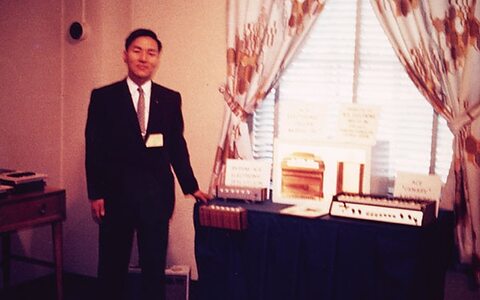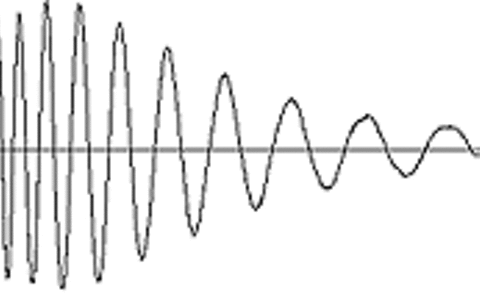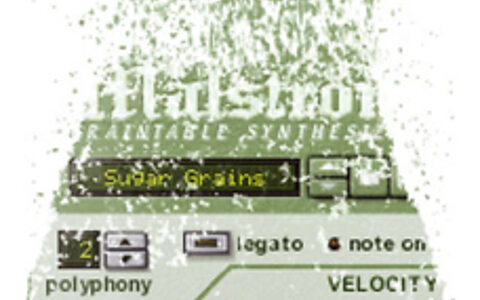
ROBIN MORLEY: Stop Showing Off & Make Some Tunes
Robin Morley explains why he thinks musicians should stop showing off and get on with making some tunes...
To find the exact phrase, put the words in quotes or join them together with a plus sign e.g. live+recording or "live recording".
To find, say, all live recording articles that mention Avid, enter: live+recording +avid - and use sidebar filters to narrow down searches further.

Robin Morley explains why he thinks musicians should stop showing off and get on with making some tunes...


The market for software that emulates guitar amplifiers is pretty crowded these days, but Native Instruments have found a new angle with a modular program that comes with a dedicated hardware controller and interface.

The Vetta II amp range embodies the most sophisticated implementation of Line 6's guitar amp modelling technology to date. It delivers more amp models than the original Vetta, offers more user control of the sounds, and it also features an optional digital interface for use with the Variax Digital Modelling Guitar. Second opinion by former Be Bop Deluxe guitarist Bill Nelson.

The Roland name is almost synonymous with music technology — there can't be an SOS reader who has not made use of their instruments at some time. As founder Ikutaro Kakehashi approaches his 75th birthday, we begin a journey through the company's extraordinary history...

Korg's CX3 digitally modelled combo organ went down a storm when we reviewed it some two years ago. Now it's time to find out if the dual-manual BX3 is twice as good.

There may not be many new features, but MaxMSP 5 benefits from a fundamental overhaul that brings Cycling 74's open-ended media programming toolkit into the modern world of multi-processing and slick interface design.

Not content with modelling guitar amps, Line 6 have now turned their attention to the guitars themselves.

Use of a full symphony orchestra remains a luxury afforded only to the world's top-selling artists or film composers. But with a little help from technology, the sound of convincing strings and blaring brass is achievable on a budget. John Rowcroft reports, and offers advice to anyone seeking to follow his example...

One of the most influential jazz keyboardists ever, Herbie Hancock is renowned for his innovative use of electronics and new production techniques.

French musician Hector Zazou's quest for sounds and songs with a difference took him North, to find ethnic drumming from Siberia, joik chanting from Lapland, and the disappearing folk music of the World's northern tribes — which he combined with contributions from himself and world-famous artists, to create a unique musical experience. Paul Tingen gets some Northern Exposure.

How can I create the fat bass sound I hear on commercial productions? What are the differences between S/PDIF and AES-EBU? Are there any problems powering UK electrical equipment with Vancouver voltages? Can you recommend some omni mics for chamber recording? How can I build a suitable enclosure to reduce the noise of my computer? Is it possible to create a fake stereo track from a mono source? How can I make my MIDI controller's knobs work? How can I mix a track on a multitimbral synth?

Recording a large orchestra can be fairly tricky, even in the most well-equipped of studios, but trying to get a great sound on location, using only the gear you can fit into your car, adds challenges all of its own.

The Virus TI promises to bridge the divide between hardware and software instruments, and create a world of Total Integration, while still offering the classic Virus sound. Is it a hard reality, or have Access gone totally soft?

Young Irish engineer Robbie Adams played an important part in the recording of U2's popular and critically-acclaimed albums Achtung Baby and Zooropa. Here he gives Paul Tingen a fascinating insight into the exciting and unorthodox recording methods they used.
If you've £250 to spare and a reverb-shaped hole in your studio, Lexicon would like you to fill it with their latest budget processor, which offers 20-bit converters, a digital output as standard, and the famous Lexicon Ambience effect.

The news that Waves' range of quality plug-ins is now available for DP adds to the activity in an already interesting month for Digital Performer users — despite a delay in the release of 4.1.

Granular synthesis is the core technology behind the latest time-stretching and pitch-shifting algorithms, but it can also be used to generate extraordinary evolving soundscapes. We explain how the process works and show you how to get the best from the software that uses it.

If you are the kind of person who likes to accentuate the transients in their pitch-shifted recordings, before vocoding them and auto-doubling the results, Waves have the perfect plug-in bundle for you...

Irritated by the pop-fixated production values of small commercial studios, Per Villez decided to attempt a jazz recording session at home, using minimal equipment to produce master-quality results. Here he explains how he went about it on his own terms.